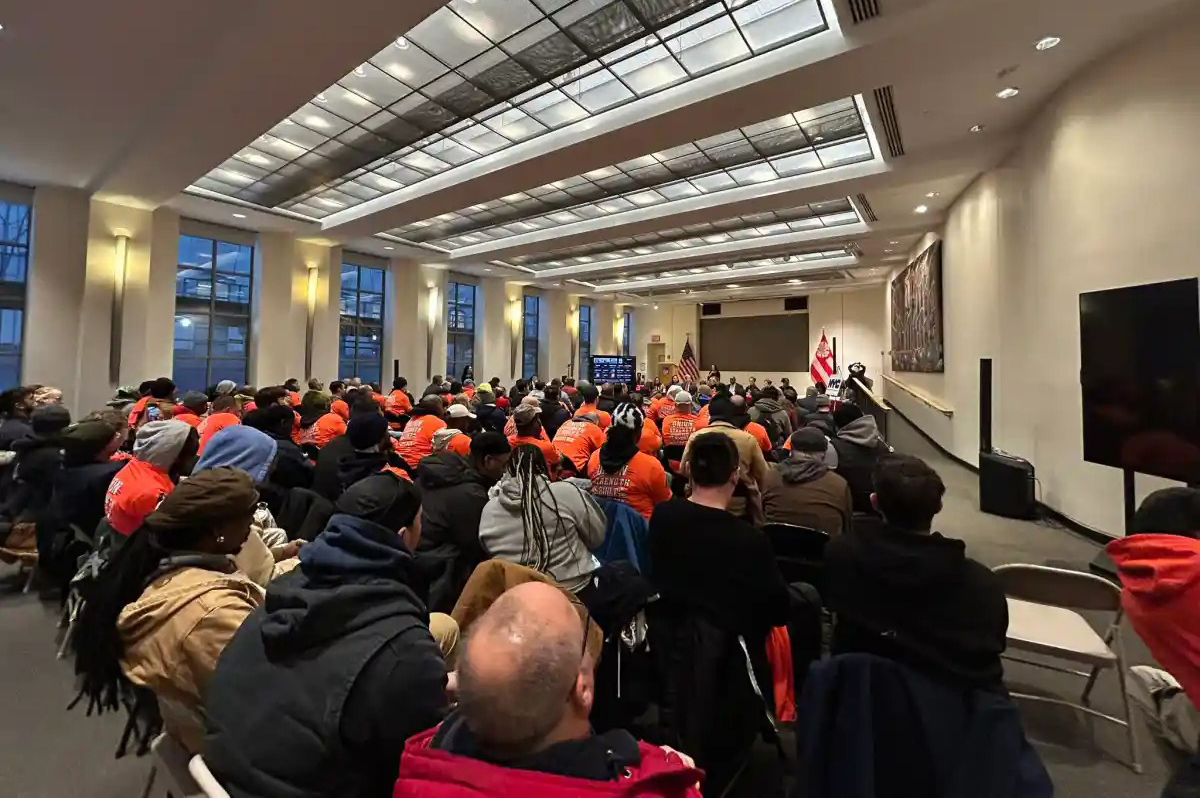Residential Conversion in 220 Water Street's Future
When Westchester-based GDC Properties plunked down almost $23 million for the 200,000-square-foot warehouse at 220 Water Street in Dumbo, its principals wasted no time in hiring a certain architect with an office up the street to add a two-story, 35,000-square-foot addition on the roof. Then, after a couple of years of playing their cards close…


When Westchester-based GDC Properties plunked down almost $23 million for the 200,000-square-foot warehouse at 220 Water Street in Dumbo, its principals wasted no time in hiring a certain architect with an office up the street to add a two-story, 35,000-square-foot addition on the roof. Then, after a couple of years of playing their cards close to the chest, the developers filed plans earlier this month to convert the industrial space to residential use. This time around, though, they decided to go with Meltzer/Mandl Architects. The plan, according to DOB docs, is for 159 apartments with some parking and a retail store on the ground level. These could make incredible loft spaces—hopefully M&M will exercise restraint and let the building’s bones take center stage. GMAP P*Shark DOB





Funny you should mention sharks. Do you remember all the weird stuff in the garbage from the toy factory? I once found dozens of shark puppets. Another time, Santa heads. Okay, enough reminiscing for now…
My studio was in that building in the eighties, and whenever there was open studio, the sharks were already pouring in. We were a design business, not fine artists, but people would “accidentally” wander in looking for our neighbor’s paintings. They’d always rotate, look up and say the magic words “Hmm. Honey, wonder how much THIS place is going for”
Gak. FWIW, I am resonably sure the phrase “DUMBO” was coined at a meeting held in this building.
I guess it’s true. The artists really ARE moving to Beacon! You will LOVE the comment about equity!
“After 15 years in a Dumbo loft, Sara Pasti, 50, a painter and arts consultant, got tired of battling landlords over heat and repairs, and left for Seattle. Six years later she wanted to return to the East Coast, but also wanted to own a home.
Some friends told Ms. Pasti about Beacon and she quickly found a three-bedroom Victorian for $200,000. ”The mortgage on my house is half what my friends in New York pay for rent,” she said.
Ms. Pasti has been chased out of enough neighborhoods to know the effect artists can have on property values. In Beacon, she has protection because she was able to buy.
”Artists who have lived in enough neighborhoods soon realize that if you don’t own anything you will eventually be forced out,” Ms. Pasti said. ”Equity is very important.”
http://longdockbeacon.com/nyt9.12.04a.text.php
$200 for 2,000 sf
WTF!
Well, no one I know hung on that long. As I recall, the owner rented to artists as residential even though he knew perfectly well it was illegal because, at the time, the buildings could not attract enough businesses. Most of the artists gave up and moved long before this article was written. I think many people were paying around 800 for lofts back in the early 80s. Believe it or not! (But the heating bills were HUGE in the winter.)
Carol: I read that quote and immediately felt enormous sympathy for the poor artists…until I read this:
“One painter, Sara Pasti, who pays about $200 a month for a 2,000-square-foot loft apartment…”
Anyone who thinks that sort of thing is going to last forever in NYC truly needs a healthy dose of reality. You ride it as long as you can, then gracefully make way for second-round gentrifiers.
is 11:47 joking, or had Scarrano been stricken with karma? Anyone care to share? Seems odd someone would defend that name.
1:18, no it’s not unless they do high enough roof addition. It seems that 3 stories or more is needed for the top floor to have unobstructed view.
is this building high enough for any river views?